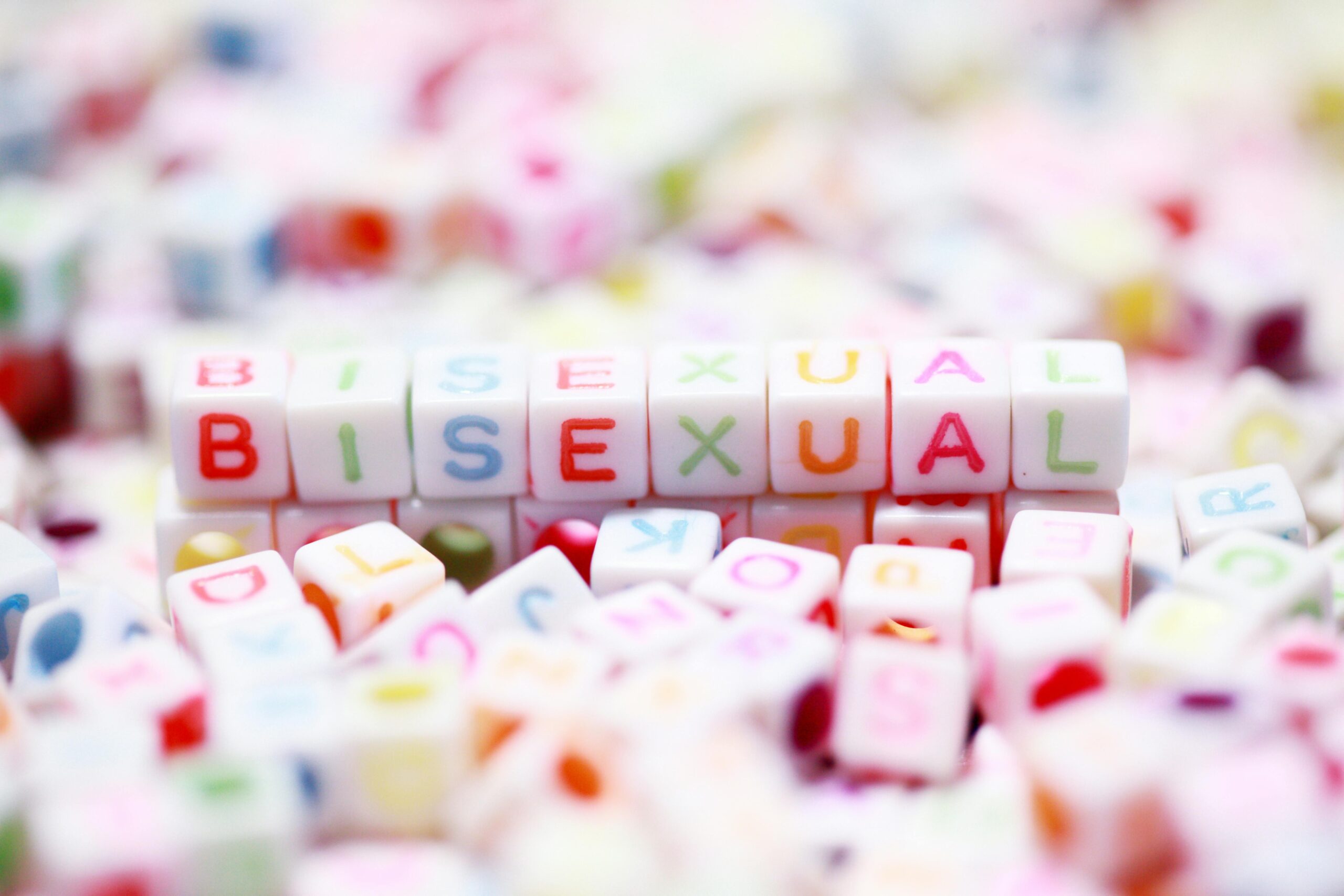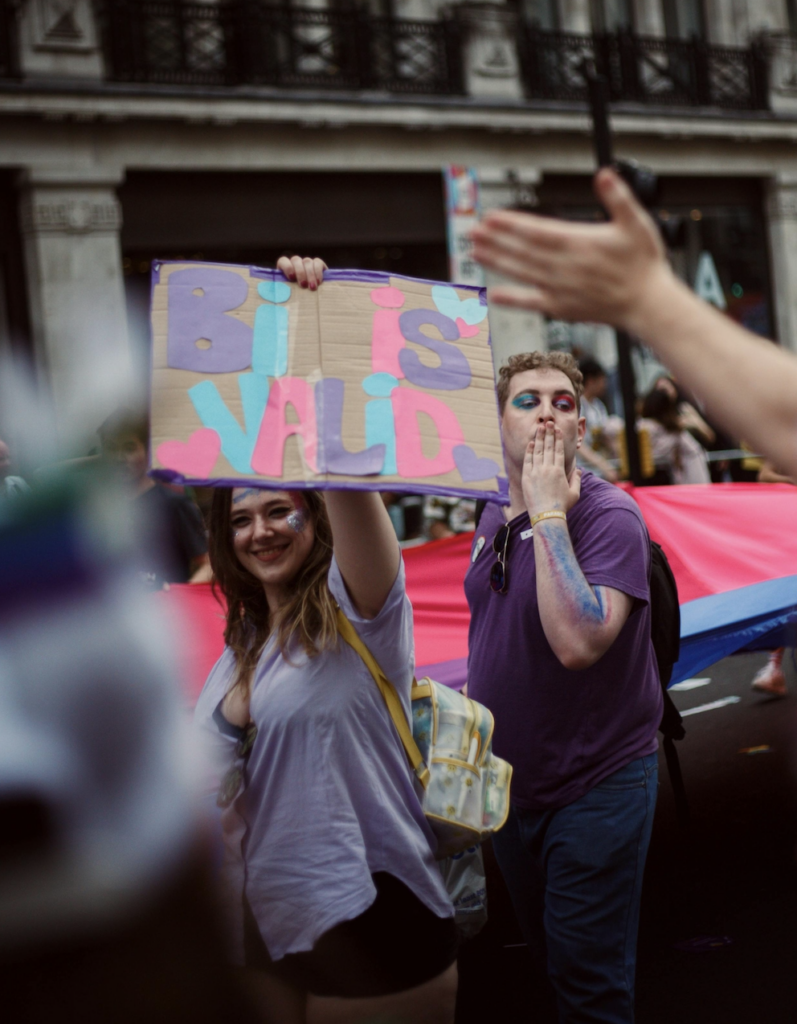“He’s experimenting. It’s a phase that’s going to pass. Pay no attention and it will be forgotten.”
“It has become a trend and she wants to feel like she belongs.”
“Yes, but you have to decide. You can’t have it all to yourself.”
“He’s gay and he won’t admit it.”
“She’s straight, but she wants attention.”
“So you have threesomes and stuff?”
“Katya has been with men all her life, I’m not convinced!”
“Have you ever had a relationship with both a man and a woman? How do you know if you haven’t tried both?”
“Lesbian, gay, I can understand; with bisexual, I don’t understand how it works!”
“How can you be bi and not want sex?”
The article is written by Marilina Avani, a member of the Scientific Team of Orlando LGBT+, and was originally published under the Greek LGBTQ+ Helpline “11528-By Your Side”.

* Bisexuality: Physical and emotional attraction for more than one genders. Bisexual (bi, for short): A person who experiences physical and emotional attraction for more than one genders
A person with bi (bisexual) sexual orientation has heard a mix of the above, after coming out. Prejudice, doubt, suspicion, invisibility and erasure are things that continue to accompany the bi identity. The picture is made more difficult when these are experienced by a bi person outside of, as well as within, the LGBTQ+ community. The spaces where this identity is not challenged, undervalued and evidence of it is not expected are even fewer and more limited than we might imagine. The fact that some bi people (e.g. a bi cis man, who mostly has relationships with women) may not encounter direct discrimination and aggression on a day-to-day level may bring up guilt, as well as a sense in the individual that they are not equally part of the LGBTQ+ community and are not equally entitled to take up ‘space’. Something that can reinforce the sense of not belonging is that because of heteronormative society it is more acceptable to remain in heterosexual relationships by keeping a part of one’s self hidden. At the same time, the complete erasure of their identity (bi erasure) is often socially encountered: one manifestation of this is that when we see a couple of people of different genders the first, heteronormative thought is that they are heterosexual (straight) people. One of the main effects of biphobia that may be internalised is a sense of “I don’t belong anywhere”, “both for straight people and for the community, I am either straight or I’m hiding my true sexual orientation.”
It is true that for over a century the bi identity was not recognized as a distinct sexual orientation. From the earliest theories it was approached as the transitional stage to an organised identity, either straight or lesbian/gay. In recent decades, however, it has been recognized as yet another sexual orientation with its own needs and characteristics. In a world where we have learned to think and see in binaries (woman/man, lesbian-gay/straight), an identity that is not one or the other, but that contains both one and the other(s), can be confusing, perplexing and alienating. Until a few decades ago, visibility and demands promoted monosexuality, still keeping in the closet the discrimination and fearfulness experienced by the B (in the acronym LGBTQ+) for reasons explained politically, historically, movement-wise and scientifically.
However, studies continue to show that bisexual people experience reduced mental health compared to monosexual people. In the bias equation, the individual’s gender identity appears to play an active role for reasons related to sexist and gender stereotypes (e.g., more negative attitudes towards a cis bi man than a cis bi woman, due to societal perceptions of masculinity). These studies, like the individuals’ narratives, ring subtle bells about both what they actually experience and what they actually need.
To begin with, it is important to keep in mind that bi sexual orientation is a sexual orientation in its own right: it is not a transition to something else, it is not a challenge, it is not an experiment, it does not need evidence, it does not need a stamp of partners of the same and different gender(s) on its sexual/romantic passport to be legitimately bi. Also, a bi sexual orientation is not synonymous with polyamory and polygamy: a person can have any form of relationship they wish (polyamory, polygamy, monogamy, etc.) regardless of their sexual orientation. Furthermore, it is important to keep in mind issues of intersectionality, such as the fact that a person may carry more than one identity that carries prejudice and discrimination (e.g. non-cis gender identity, economic status, race, religion, disability, etc.) which increases the complexity regarding the discrimination and prejudice they face. At this point, it is also necessary to mention the asexual spectrum/umbrella to which a bi person may also belong, who, for example, may be biromantic, experiencing emotional attraction to more than one genders, but not sexual attraction. So, space is equally due to be given to the A sometimes found in the acronym LGBTQ+, which is the A of the asexual spectrum.
Like every letter in the community, the B (for bisexual) has its own history and is confronted with its own unique prejudices, microaggressions and attacks. People who carry an bi identity need to have spaces that feel safe. Spaces that acknowledge what social prejudices bi people have to deal with and that validate and empower people who carry that identity.
Having your identity erased, challenged and invalidated can be anything from inconvenient to painful for you who are cumulatively burdened by the above during your lifetime. Biphobia is real and needs to be acknowledged whenever we raise issues of LGBTQ+ identities, phobia, discrimination and bullying.
If you identify as bisexual:
- What you feel and your self-determination is enough. Scales and percentages are for maths.
- You are equally a member of the LGBTQ+ community.
- Biphobia exists. It’s okay and understandable at times for it to affect you. Part of it can be questioning and invalidating your identity. It’s important at those times to acknowledge that social prejudices are to blame for this, not your bi sexual orientation.
- It may be helpful to seek out other bi people where you can discuss your experiences and/or professionals who specialise in issues of sexual orientation, gender identity, gender expression and sex characteristics.
- You may not have met other people in your everyday life who feel the same way you do. This doesn’t mean you’re alone, but that there isn’t enough visibility and representation for the full range of sexual orientation diversity, yet.
- At some point in your life, you may have reconsidered your sexual orientation because you felt an attraction to a gender(s) that had not occurred until then. Indeed, sexual orientation does not remain the same for all individuals throughout their lives. Give yourself the space and time to feel that part of yourself too.
If you are an ally outside or within the community:
- Sexual orientation is not determined by others, but is self-identified. Only the individual herself/himself/themselves actually knows whether they feel attraction, towards whom they feel attraction and what kind of attraction it is (sexual/emotional).
- Try to listen. Give space to what the person feels!
- Αvoid questioning, invalidation, suspicion.
- Seek out materials, information and current data regarding bi identity. Talk to qualified mental health professionals about your questions and concerns.
Finally, don’t forget that you have every right – regardless of your sexual orientation – to explore, to inquire, to question, to not know, to not have answers, to experience a fluidity, and so on. We don’t have the same timelines, nor the same ways, nor the same experiences.
There is nothing strange or weird about it. Each and every one of us simply has their own colourful (rainbow) processes!
References
Bowes-Catton, Helen Talitha (2016). ’Like a playground should be?’ Experiencing and Producing Bi Subjectivities in Bisexual Space. PhD thesis The Open University.
Corey E. Flanders, Cheryl Dobinson & Carmen Logie (2016): Young bisexual women’s perspectives on the relationship between bisexual stigma, mental health, and sexual health: a qualitative study, Critical Public Health, DOI: 10.1080/09581596.2016.1158786
Flanders, C.E., Dobinson, C. & Logie, C. (2016). Young bisexual women’s perspectives on the relationship between bisexual stigma, mental health, and sexual health: a qualitative study. Critical Public Health, DOI: 10.1080/09581596.2016.1158786.
Flanders, C.E., Dobinson, C. & Logie, C. (2015). I’m never really my full self: Young bisexual women’s perceptions of their mental health. Journal of Bisexuality, 15 (4), 454-480.
Gonzalez, K.A., Ramirez, J.L. & Galupo, M.P. (2016). I was and still am: Narratives of bisexual marking in the #StillBisexual campaign. Sexuality & Culture, DOI 10.1007/s12119-016-9401-y.
Helms, J.L. & Waters, A.M. (2016). Attitudes toward bisexual men and women. Journal of Bisexuality, 16 (4), 454-467.

